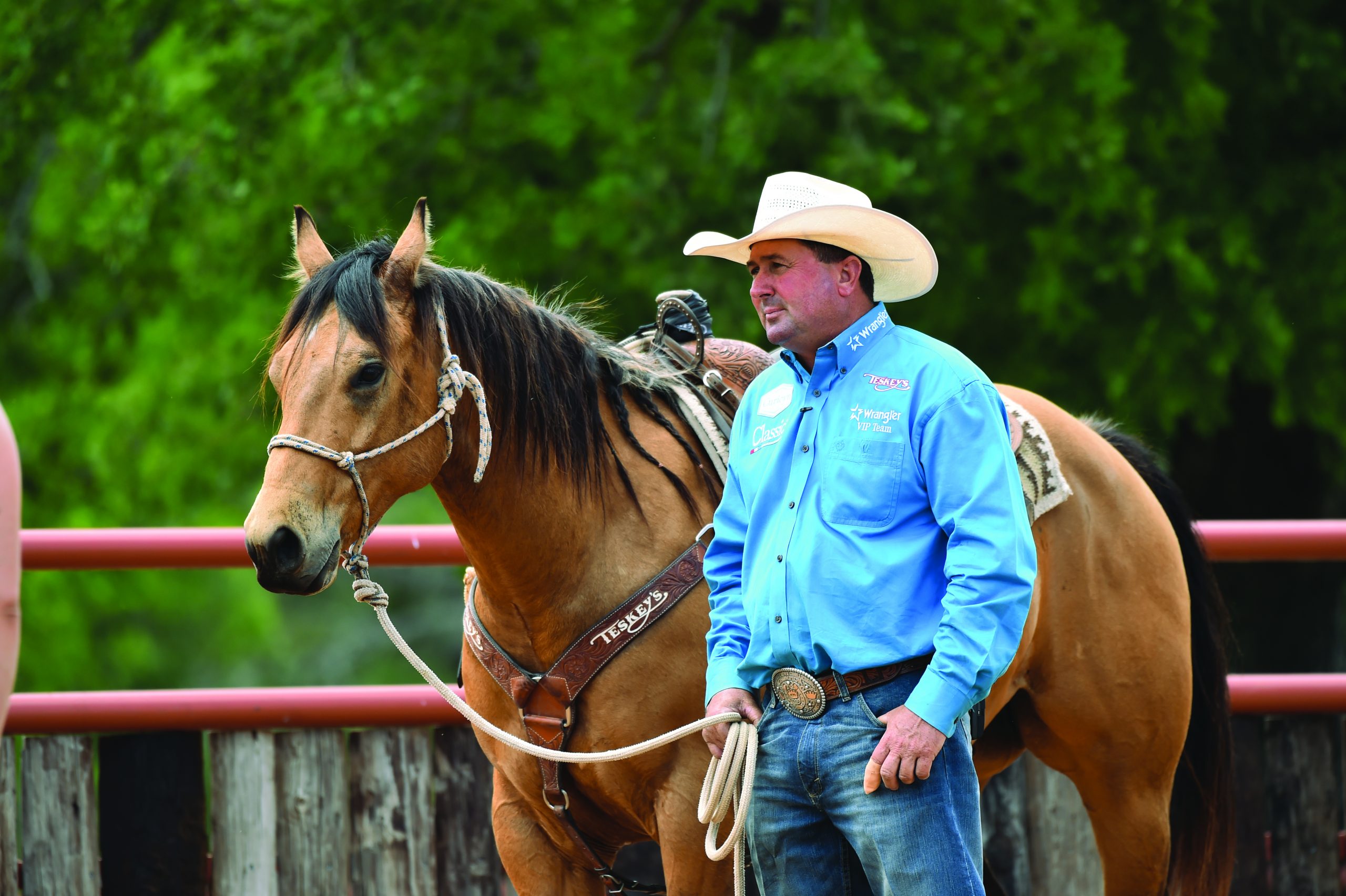Riding and training so many different horses, you get a pretty good idea of what each horse can do pretty early on. You figure out their capabilities—and their limits—and a lot of making good horses is trying not to ask them to do something they can’t and staying within their abilities.
[Read: Creating the Perfect Corner with Clay Logan]
I’ve had good horses that lacked speed, and the key on them is to make up for it by not missing the barrier. It’s my job as a horseman to set each horse up for success, not failure.
If I ask a horse to go outside his limits, that’s where I run into trouble. Asking a horse to stop harder than he is able to stop, asking one to get back off the bridle faster or harder than his mouth allows—that’s where we build up resistance and defense mechanisms in horses.
[Read: The Art of the Stop: Getting Your Horse to Drag It]
I think the biggest thing, training and riding different horses, is that once you know all the horses, you know what they’re going to be doing. The biggest thing is to try not to ask them to do something they can’t do. Don’t ask them to go above their abilities.
One horse might lack speed. Try to make up for it by not missing the barrier. Set him up for success, not failure.
[Read: Run VS. Rate: What to Look For in A Prospect with Trevor Brazile]
We’re trying to make one perform to the best of its abilities. We’re doing our job to make him do what he can do. We don’t want to ask one to do something he can’t do and that’s where you get into trouble.
I think you have to go on the individual. Some are slower maturing. I was heeling on them and I went to heading on them and they turn into $150,000 horses. We try to heel on most all of them to begin with just to get a foundation without having to go too fast.
Some are too cowy and we have to go to heading on them first.
They just need a box foundation.
[Read: Fast and Flat: The Secret to Teaching the Start with Trevor Brazile]
When one just doesn’t have it, it’s our business to tell the owner. I had a customer, we were riding his horse for 30 days. He was numb sided. He should have been coming along, but I told them I don’t think he will be what they want in the end. We evaluated realistically, and I don’t want to waste their money.
These real special type horses hit the ground with the steer and all you have to do is swing your rope with a horse’s stride and they’ll be in time with a steer. From day one, they hit the ground with the steer every stride. You can swing with your horse’s stride and deliver your rope and you’ll catch.
[Watch: Clay Logan talks about how to manipulate your position to ride a longer-strided heel horse]











